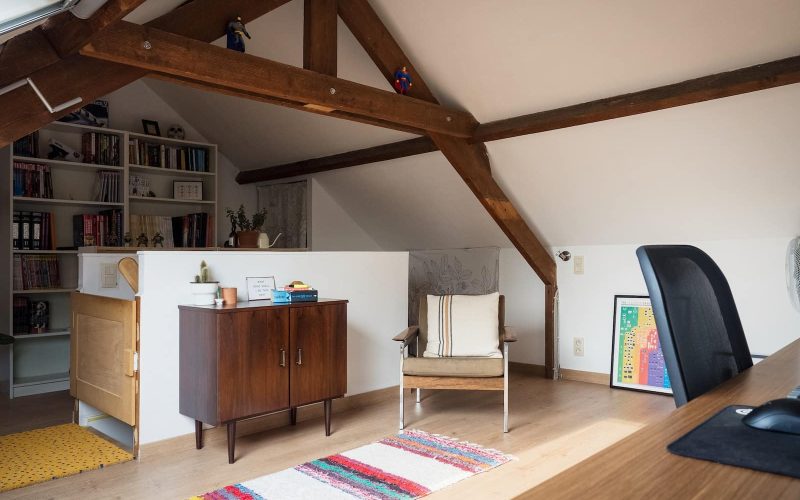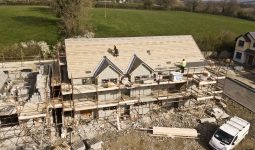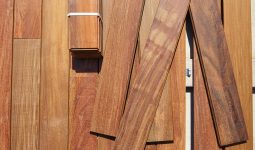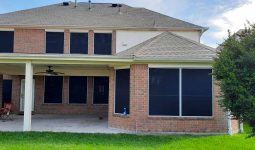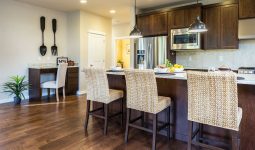Drywall is a popular building material, but it is not durable and may degrade over time; thus, various drywall alternatives for attics are available.
Wooden planks, veneer plaster, plastic panels, plywood, and cement board are just a few of the materials you may choose from.
Homeowners have used drywalls for interior designs, especially in attics, for quite some time.
Drywall installation requires much work, including taping, sanding, mudding, and cleaning up a big mess.
Below is a list of the drywall alternatives for the attic.
1. Wood Planks
For a long time, wooden planks were the standard for lining homes’ interiors. The use of hardwood planks for wall construction precedes drywall for several decades.
Wooden plank walls are more durable and low-maintenance than drywall, making them one of the best drywall alternatives for the attic.
All you need to do is keep the wood dry. To extend the life of treated timber, you can cover it with a protective coating.
Wooden planks may be finished in infinite ways to achieve any desired look.
2. Veneer Plaster
Veneer plaster is an excellent option if you’re looking for one of the best drywall alternatives for the attic that will keep the same aesthetic.
They are constructed from layers of paper-thin drywall, allowing spectacular painting and texturing. Since they already have the finishing applied, they are a more accessible alternative to drywall.
If you want a solid wall after you use veneer plaster, drywall is a suitable substrate. This method is incredibly straightforward since you can apply veneer over existing drywall.
This will not take long, and you may proceed to whatever comes next as soon as possible since it dries quickly.
3. Textured Panels
Before, textured panels were only seen in fancy hotel lobbies and food outlets. However, due to current design trends, they are becoming more popular in home interiors. To provide some visual interest, these panels often include three-dimensional designs.
You may attach these panels to existing walls to cover faulty or unattractive drywall. You can paint 3D wall panels to match any decor, and there is a wide variety of styles to choose from.
Textured panels are excellently durable, inexpensive, lightweight, and water-resistant. However, they are not designed to withstand high temperatures, so it’s crucial to consider this if you plan to install them in a hot area.
4. Pegboard
Adding a pegboard to your wall is a practical and attractive drywall alternative for the attic. However, this may be a fantastic choice depending on how you want to put your attic space to use.
Pegboard is a sturdy material that can be nailed right to the studs in your attic for instant organization.
Pegboard is a great option for an attic interior wall because of its low cost, high durability, and many potential uses.
You may arrange your shelves and storage areas with this kind of walling in whatever way you choose, and there are no limits to your creativity.
5. Wahoo Walls
Regarding installation costs, Wahoo Walls are the most affordable since homeowners can put them up with little professional assistance.
Wahoo walls click together, so there’s no need to drill holes in the wall. Gluing them to the wall is an option but not required.
The walls are often installed in basements, so it stands to reason that they are resistant to moisture and mildew.
Wahoo may be used to restore the appearance of drywall in damp basement areas. You may also count on them to keep water out of your house.
6. Brick Or Stone
Brick or stone walls are suitable drywall alternatives for attics, where a brick or stone wall is not a viable option for structural reasons.
Plenty of brick or stone imitations exist for such a situation. This may be accomplished by attaching a veneer directly to the plywood base. Lightweight and simple to set up, faux brick is a popular choice for outdoor applications.
This is a fantastic drywall alternative for the attic that gives the look of brick without actually using bricks. Some faux brick materials on the market are fireproof and resistant to water.
Stone veneer is a lightweight, cost-effective alternative to actual stone with the same aesthetic appeal.
Foam, the typical material for stone veneer, makes the veneer very lightweight and simple to work with. Brick or stone cladding might be applied to the frame to provide a more natural look.
7. Fiberglass Reinforced Panels
Essentially, fiberglass-reinforced panels are similar to drywall, just stronger. Their superior durability sets them apart.
They have a sturdy construction and are resistant to scratches. Those panels are sturdy enough to stand on their own.
This eliminates the need to attach the partition to an already existing wall. With their help, you may add an inch to your walls and make the area seem larger.
Mold and germs don’t have a chance against fiberglass-reinforced panels, another reason why they’re so popular. They are low-priced and simple fixes.
8. Cement Board
Despite their potential harshness and coldness, cement boards may be an outstanding interior wall finish, particularly in an attic. This form of walling is preferable in damp, moldy environments.
Typically, cement and cellulose fibers are used to create these boards. Due to the high cost of cement boards, this is one of the most costly drywall alternatives for attic.
Their weight makes the panels difficult to handle, even more so if one worker fixes the walls at a time.
The stark appearance of cement boards is not for everyone or every design scheme. However, it may be quite effective in certain settings.
9. Plastic Panels
Plastic wall panels are widely used as a cost-effective alternative to drywall for attics. The fiberglass reinforcement in these fabrics increases their adaptability.
The panels are widely used in high-humidity regions because plastic panels resist rain and humidity.
If you put them in, mold will be a thing of the past. Unlike drywall, plastic panels can be cleaned without damaging their appearance, which is a huge plus. If you have kids or pets, these wall coverings are safe in your home.
10. Exposed Concrete Block
The exposed concrete block in your attic will have a sleek and stylish new look. They leave a natural, unfinished aspect that makes your wall seem striking. The cinder blocks may still be painted to give them a textured appearance.
If you keep the wall as it is, you’ll have a beautiful addition to your attic. You will also have a lot of creative flexibility in terms of decoration, such as mixing it with glass and back furnishings.
11. Plywood
This is another excellent choice for your walls that can be added to the list of drywall alternatives for the attic. Plywood is more popular than drywall since it’s much more affordable.
They’re not only inexpensive but also light and simple to carry along. Easy to install with only a few screws, they’re great for do-it-yourself tasks.
They offer the same benefits as more costly alternatives, so there’s no need to shell out the extra cash. You won’t ever be sorry that you put up plywood walls as long as you decorate them.
12. Lath and Plaster
The use of lath and plaster for interior walls dates back many decades. Although constructing a wall this way is labor-intensive, the finished product may be aesthetically pleasing and durable.
Laths, historically thin strips of wood, are fastened between the studs and joists of a wall. Once the laths have been installed, plaster is applied.
Cracks are patched until a uniform finish results. This construction approach is similar to an ancient wattle-and-dab wall.
If you need a wall with a curved surface but don’t want to deal with the hassle of installing regular drywall, this is a good alternative.
Hand-split timber strips are the typical kind of wood used. Contemporary alternatives include rock lath and metal lath.
Adding horsehair to plaster is a great idea for a more durable coating. Lath and woodchip clay may be utilized in the same ways that lath and plaster have been used for decades.




